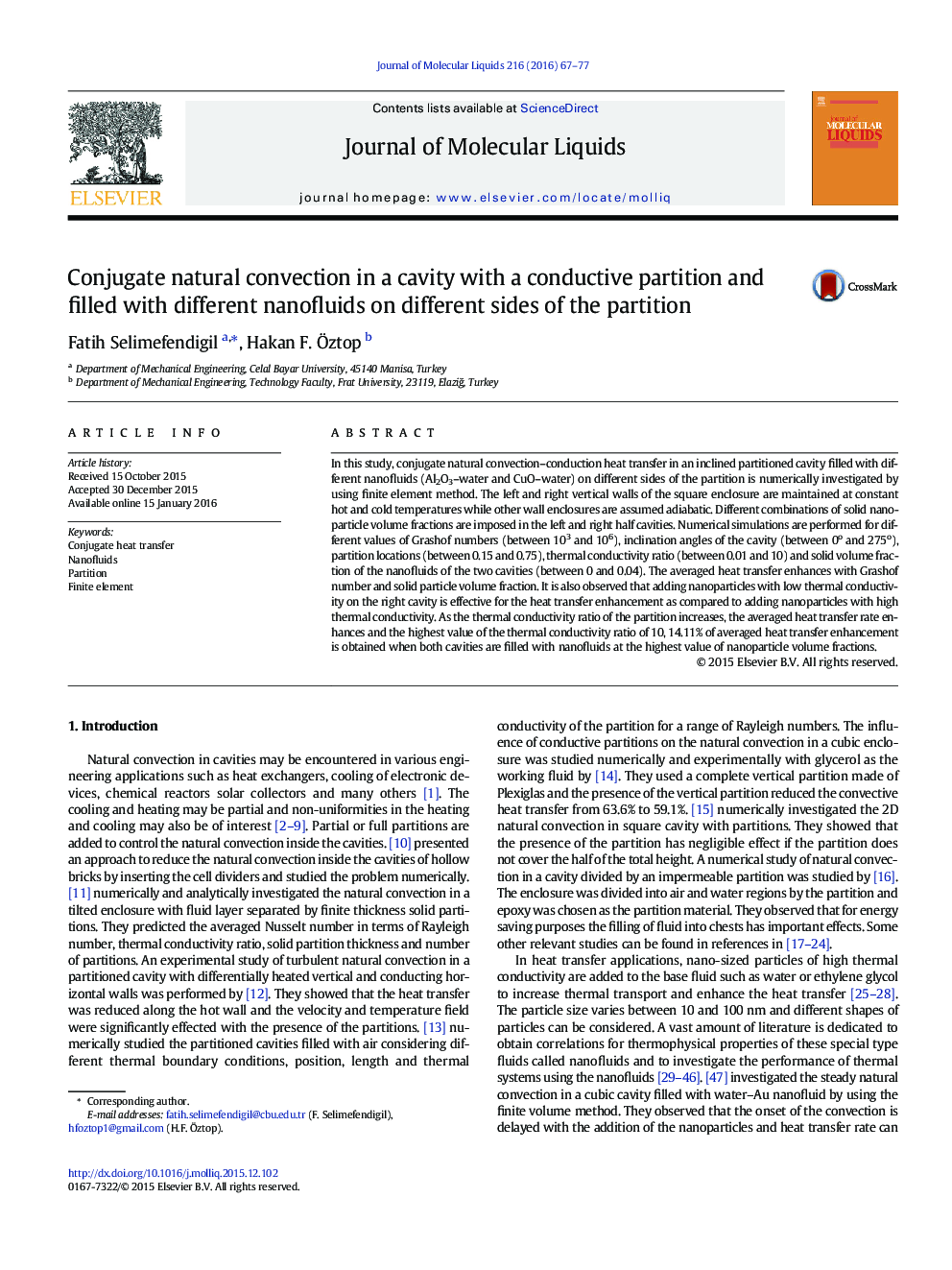| Article ID | Journal | Published Year | Pages | File Type |
|---|---|---|---|---|
| 5409971 | Journal of Molecular Liquids | 2016 | 11 Pages |
â¢Conjugate natural convection filled with nanofluid and with a partition is studied.â¢The local and averaged Nu enhance as the Gr, Kr and Ï increase.â¢The local Nu first increases and then decreases with increasing partition location.â¢Adding nanoparticle with low k on the right cavity is effective for HTE.
In this study, conjugate natural convection-conduction heat transfer in an inclined partitioned cavity filled with different nanofluids (Al2O3-water and CuO-water) on different sides of the partition is numerically investigated by using finite element method. The left and right vertical walls of the square enclosure are maintained at constant hot and cold temperatures while other wall enclosures are assumed adiabatic. Different combinations of solid nanoparticle volume fractions are imposed in the left and right half cavities. Numerical simulations are performed for different values of Grashof numbers (between 103 and 106), inclination angles of the cavity (between 0o and 275o), partition locations (between 0.15 and 0.75), thermal conductivity ratio (between 0.01 and 10) and solid volume fraction of the nanofluids of the two cavities (between 0 and 0.04). The averaged heat transfer enhances with Grashof number and solid particle volume fraction. It is also observed that adding nanoparticles with low thermal conductivity on the right cavity is effective for the heat transfer enhancement as compared to adding nanoparticles with high thermal conductivity. As the thermal conductivity ratio of the partition increases, the averaged heat transfer rate enhances and the highest value of the thermal conductivity ratio of 10, 14.11% of averaged heat transfer enhancement is obtained when both cavities are filled with nanofluids at the highest value of nanoparticle volume fractions.
